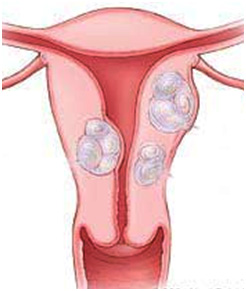Uterine fibroids (myomas, leiomyomas, or fibromyomas) are the most frequent tumors of the female genital tract: 20 to 40% of women of childbearing age have a fibroid. Fibroids range in size from very tiny to the size of an orange or larger. In some cases, they can cause the uterus to grow to the size of a five-month pregnancy or more. Fibroid may be located in various parts of the uterus.
Fibroids affect at least 20% of all women at sometime during their life. Women aged between 30 and 50 are the most likely to develop fibroids. Overweight and obese women are at significantly higher risk of developing fibroids, compared to women of normal weight.


Seema, 44 female
Mumbai, India
I met Dr Pradeep Muley, Interventional Radiologist, on July 20, 2006 and we discussed my case. He was very thorough and I got a lot of information from him...even went over my MRI pictures with me. When I asked whether I would be entitled for the medical insurance, he told ‘why not’. He said he would have his staff start working with my insurance company. My insurance was approved in a day and my embolization was scheduled the next day. Everything went off more smoothly and painless than I expected and the next day I was discharged.
Meenu, 44 female
Guwahati, Assam. India
I am writing this as an update after I had my three-month check-up with my doctor, Interventional Radiologist. My fibroid has decreased in size by more than a half and Dr Pradeep Muley said that it would continue to shrink.
Right after the procedure my periods were kind of irregular. I never knew when they would start or if they would start at all. Now I'm getting them every month and can tell almost to the day when they will start... I am really glad I found out about you and your website. It's such a relief to have an alternative to surgery.
Leena, New Delhi
Indian, 38, female
When I was diagnosed with uterine fibroids, I wanted to find out everything I could about them. My symptoms were text book symptoms: heavy bleeding, a lot of pain, anemia. I was referred to a gynecologist, who recommended hysterectomy. Basically the story was,” Well you've had your children. You don't need your uterus anymore”. That just did not match my core belief about what my body was here for.
I asked about alternative treatment, but was told that this was the only one available.
I went on the internet to know more about treatment of fibroids. I found Dr. Pradeep Muley’s (interventional radiologist)